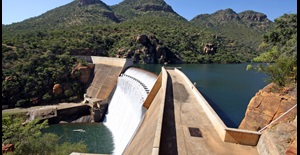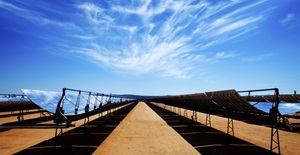Out-Law News 3 min. read
South Africa demonstrates commitment to renewable energy roll-out
22 Apr 2024, 1:41 pm
Recently published standards for solar photovoltaic (PV) and battery energy storage systems (BESS) demonstrate South Africa’s commitment to the roll-out of renewable energy projects while protecting environmentally sensitive areas, an expert has said.
The Department of Forestry, Fisheries and Environment (DFFE) recently published norms and standards (collectively, the Norms) applicable to the development and expansion of solar PVs and BESS located in areas of low or medium environmental sensitivity.
The norms mean that these developments may no longer be required to obtain an environmental authorisation (EA) required to progress with the construction and operation of a solar PV or BESS.
Although not discussed in this article, it is important to acknowledge that the DFFE have recently published additional notices for public comment relating to the exemption of the development and expansion of facilities or infrastructure for transmitting and distributing electricity; and the development and expansion of substations. This is encouraging evidence of further legislative developments being implemented to facilitate renewable energy developments and address the ongoing transmission and distribution infrastructure constraints which limit the roll-out of renewable energy projects.
Margo-Ann Werner, environmental law expert at Pinsent Masons, said: “The finalisation of these norms and standards contribute to the DFFE’s attempts to streamline permitting processes and lead time for renewable energy facility developments as part of the efforts to combat South Africa’s energy crisis.”
The move targets reducing red tape for solar PV and BESS facilities by creating national databases and releasing new procedures with reduced processing times.
The norms and standards prescribe the qualifying criteria a solar PV or BESS facility must meet to be exempt from applying for an EA and set out a simplified process for registering the facility prior to commencing with development work. This new exemption registration process will significantly reduce the timing associated with obtaining authorisation as an application for EA for SPVs and BESS, can take several months, including specialist assessment, public participation and eventual consideration by the competent authority and grant or dismissal. With the new exemption registration process, the DFFE is prescribed to take 10 days, from receipt of the application, to issue a registration certificate to the developers of the renewable energy project if the project meets the qualifying criteria.
The overall benefit of reducing the timeframe will be subject to how fast the developer assesses whether the project qualifies for registration. The developer will be required to attend to what is referred to as a consultation process. The usual public participation process undertaken as part of the application for an EA is prescribed to be minimum 30-days. However, with the registration process, this “consultation” and its timing appears to be at the discretion of the developer.
The BESS norm excludes several activities under listing notices 1, 2 and 3 of the Environmental Impact Assessment Regulations 2014 (28 pages / 189 KB). These regulations identify activities that may have a significant impact on the environment, with the BESS norm explicitly listing the activities which may be excluded from the EA requirement, including energy generation and electricity transmission and distribution infrastructure.
Conversely, the solar PV norm only excludes three identified activities but goes on to say, “and any other associated activity identified in listing 1,2 or 3 necessary for the realisation of such facilities”. “The language specifically used in this norm implies that, so long as any listed activity can be qualified as ‘necessary’ for the development of solar PV, the activity may be exempt from the requirement of an EA,” said environmental law expert Sarah Burford of Pinsent Masons.
However, being able to exclude the proposed activity from the EA requirement does not necessarily give the project the green light.
To be exempt, the area in which the development or expansion is planned to take place must be considered as a “low” or “medium” according to the environmental sensitivity rating national screening tool. The entire South African landscape has been assessed at a high level by the DFFE, categorising the landscape into varying biodiversity sensitivity ratings. Land is considered to be of “very high”, “high”, “medium”, or “low” sensitivity. This information has been collated into a national screening tool.
The pre-identified sensitivity must be verified in person by the independent Environmental Assessment Practitioner appointed by the developer proposing the development. Various environmental themes must be included within this verification exercise, including animal species terrestrial biodiversity, aquatic biodiversity and agriculture. Should the land still be classed as “very high” or “high” sensitivity, the rating can be disputed further by way of specialist reports, confirming the “medium” or “low” biodiversity sensitivity in that area.
Latest News
Editor's Pick
Out-Law Analysis
02 Aug 2022




